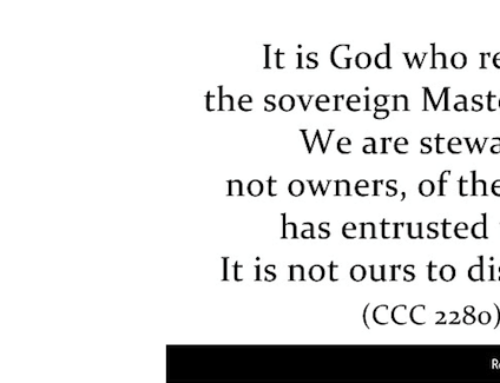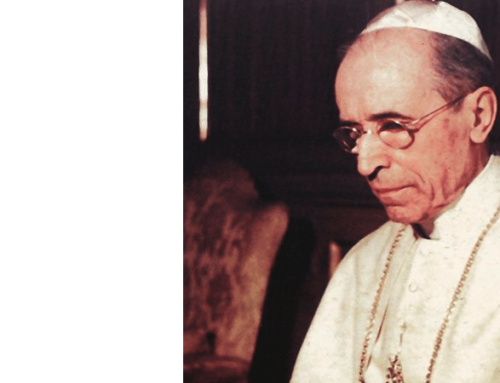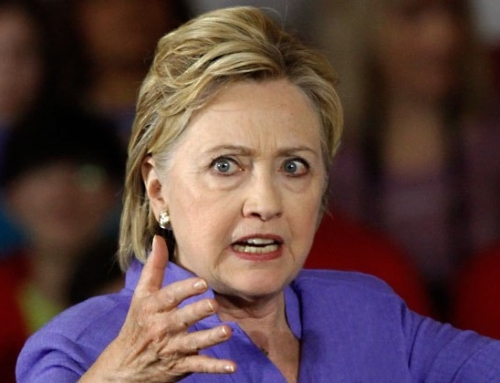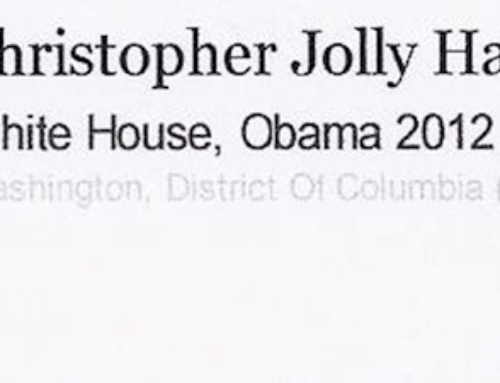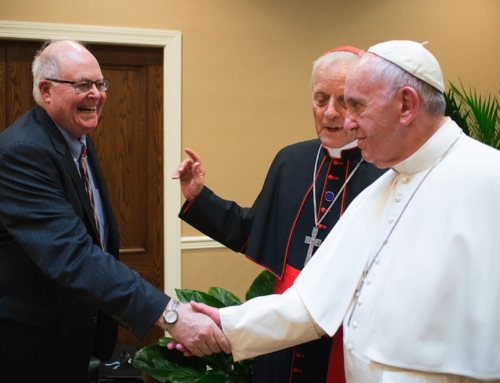by William A. Donohue; on the Religious Freedom Amendment
(7/23/1996)
On July 23, Catholic League president William Donohue testified before the Subcommittee on the Constitution of the House Committee on the Judiciary on a proposed amendment to the U.S. Constitution. The Religious Freedom Amendment, which was first sponsored by Rep. Ernest Istook and then revised twice, once by Rep. Henry Hyde and again by Rep. Dick Armey, reads as follows: “In order to secure the right of the people to acknowledge and serve God according to the dictates of conscience, neither the United States nor any State shall deny any person equal access to a benefit, or otherwise discriminate against any person, on account of religious belief, expression or exercise. This amendment does not authorize government to coerce or inhibit religious belief, expression or exercise.” Text of Donohue’s testimony: The Catholic League for Religious and Civil Rights, the nation’s largest Catholic civil rights organization, enthusiastically endorses the Religious Freedom Amendment as proposed by Congressman Henry Hyde and modified by Congressman Dick Armey. The First Amendment was written, in part, to secure religious liberty by keeping religion free from governmental intrusion. James Madison, who authored the First Amendment, made it quite clear what he meant when he wrote the so-called establishment clause. He meant to forbid the establishment of a national church and to forbid governmental preference of one religion over another. The idea that this clause would be used to insulate religion from government would have struck Madison, and the other Framers, as bizarre and downright disrespectful of their original intent. Regrettably, the work of the Framers has been so upended by recent judicial and executive decisions as to make moot their efforts. In the 1984 Supreme Court decision, Lynch v. Donnelly, Chief Justice Warren Burger, writing for the majority, stated that the Constitution does not require “complete separation of church and state; it affirmatively mandates accommodation, not merely tolerance, of all religions, and forbids hostility toward any.” Unfortunately, the record shows an increasing hostility for religious belief, expression and exercise, making necessary the remedy that Congressman Armey has proposed. Whatever the sources of the current animus against religion, there can be little doubt that state encroachment on religion is a reality and that religious speech is often assigned a second-class status. The examples that follow are offered as evidence of the need for a Religious Freedom Amendment. The encroachment of government on religion has infused many public policy measures. It has been well-documented that religious organizations have managed to service the needy in ways that are both effective and cost efficient. Yet when the federal government entertains day care bills, as it did in 1988, it does so with the proviso that religious institutions that participate in such programs must first sanitize their quarters of religious symbols and halt all religious instruction and worship. In New York the authorities even went so far as to say that religious preference was illegal in religious-based foster care centers and that Catholic schoolchildren were barred from making the sign of the cross before meals. It would be more honest for legislators to simply say that the gutting of religious institutions is a precondition for largesse. Even more incredible was the attempt by the City of New York to force the Archdiocese of New York to abide by an executive order (Executive Order 50) that mandated an affirmative action program for homosexuals for all institutions that receive municipal funds. The Archdiocese of New York, which was expecting to receive $120 million to operate its child care facilities, refused to accept this litmus test and thus did not receive the funding. Though the Archdiocese eventually prevailed in the courts, it did not do so before considerable damage had been done to the children in its care. Indeed, the damage was even more extensive than that. At the time that the litigation was pending, the Archdiocese of New York had responded to an appeal by the mayor to open its churches to the homeless during a very bad winter. It did so without hesitation. But when the winter ended and the priests who serviced the homeless sought reimbursement for their outlays, the city refused to pay a dime, citing non-compliance with Executive Order 50. Freedom of religious expression is challenged in many ways. I recently was asked by the New York Daily News to participate in an Op-Ed debate over the question of Cardinal O’Connor’s criticisms of partial-birth abortions. The issue was not whether His Eminence was right on the subject, but whether he had the right to even address the issue. That’s how far we’ve gone: Catholic priests now have to explain why they should have the same First Amendment rights that others enjoy. And I know from talking to many priests, that this attempt to accord a second-class status to the free speech rights of priests has had the effect of stifling their expression, so scared are they of jeopardizing the tax exempt status of the Catholic Church. Their fears, of course, are not unfounded. In the late 1980s, the National Catholic Conference of Bishops and the United States Catholic Conference were sued by abortion advocates because they advocated a pro-life position. Though the plaintiffs were denied standing, the effect of this action was to create a chilling effect on the free speech rights of the Catholic clergy. Perhaps one of the most disturbing problems that the Catholic League faces is the extent to which religious expression is denied by the same agents of government that allow for the defamation of religion under the guise of freedom of expression. To be specific, despite court decisions to the contrary, the placement of religious symbols on public property continues to be problematic, while public funding of bigoted assaults on religion proceeds with alacrity. Yet if it is wrong to use public monies and facilities to promote religion, why is it not also wrong to use public monies and facilities to bash religion? This is a question that needs to be addressed and it is one reason why the Catholic League is looking for a remedy in Congressman Armey’s bill. To be specific, in the fall of 1993, a blasphemous ad for VH-1, an MTV outlet, was posted on the sides of buses in New York City. It pictured Madonna, the pop star, on one side, and Our Blessed Mother on the other, with the inscription, “The Difference Between You and Your Parents” placed squarely in the middle. Now I cannot imagine for a moment that an ad that simply featured Our Blessed Mother, complete with a reverential statement, would have passed muster with the guardians of church and state in New York. Here’s another example. In 1990, in the Capitol rotunda in Harrisburg, Pennsylvania, a Christmas tree was put on display, adorned with about 1,000 ornaments made by senior citizens. Three of the ornaments were made in the shape of a cross, and that was enough to send the ACLU into federal district court. Though the ACLU lost, the point to be made here is that if the senior citizens decided to immerse their crosses in a jar of their own urine–much the way the celebrated artist Andres Serrano did–perhaps the ACLU would have defended their action as freedom of expression (they might even have qualified for a federal grant from the National Endowment for the Arts). We have also seen attempts to remove Catholic federal judges from cases dealing with abortion, and instances when Catholic jurors have been excluded from cases where a priest is the defendant. These examples of blatant anti-Catholic bigotry may not occur everyday, but to those who suffer such indignities, it is a condition that needs to be seriously addressed. If there were ever a place where religious expression is frequently challenged, it is in our nation’s public schools. Not only are teachers afraid to even discuss religion in the classroom, principals and superintendents throughout the nation have engaged in religion-cleansing efforts to rid the schools of any religious element. Most of these school officials are good Americans who bear no animosity toward religion and who would be quite supportive of directives that allowed for equal treatment of religious expression. What motivates them to rid their schools of religious expression is not malice, but fear. Fear of a lawsuit. I have spoken to too many school lawyers to know that even they are confused about the status of the law. So they do what lawyers naturally incline to do–they advise their clients to avoid any opportunity for a lawsuit. The result is that religious-free zones are the norm. Here are some examples of what I mean. We have all heard of instances where the display of crèches are banned in the schools, as well as the singing of religious songs like “Silent Night.” But how many know about the banning of “garlands, wreaths, evergreens, menorahs and caroling”? That is exactly what happened in Scarsdale, New York just a few years ago. In addition, the Scarsdale School Board revoked permission to sing secular songs like “Jingle Bells” and took the word “Christmas” off the spelling list in its schools. Candy canes were even confiscated by some teachers and even the color and shape of cookies became an issue: green and red sprinkles as well as bell and star shapes were all suspect. The same sanitization program was applied to Easter, to the point where even the term “Easter” was stricken from all school publications. We know there is something terribly wrong when the play “Jesus Christ Superstar” is banned from public high schools. Would they ban “Oh! Calcutta!” as well. Not for a minute: the argument would be made that frontal nudity and simulated sex was freedom of expression and if people didn’t want to see it, they could absent themselves. That plays with a religious theme are not accorded the same treatment is testimony to the present state of affairs. Children have been harassed by school officials for reading a bible on a school bus and teachers have been told to remove their bibles from the view of students in the classroom. Books like “The Bible in Pictures” and “The Story of Jesus” have been banned from school libraries, but we hear no outrage from the same civil libertarians who would protest the removal of child pornography from library shelves. Even more astounding have been the attempts by the ACLU to ban books from school libraries that promote abstinence. It does so on the grounds that abstinence is a religious perspective and is therefore unsuitable for dissemination in public schools. Other examples are easy to come by. Public school teachers have refused to accept term papers on the life of Jesus, prayers are banned in a huddle before football games and the mere mention of God at a commencement exercise–by a student valedictorian–is regularly proscribed. The Catholic League believes that if the Religious Freedom Amendment were passed by the Congress and ratified by the states that it would go a long way toward ensuring the rights that were originally guaranteed in the First Amendment. There is nothing in the amendment that would coerce anyone from observing any religion, and that is how it should be. What we are looking for is not special treatment but an end to the two-class system we have at the moment where secular expression is given preferential treatment over religious expression. That is why the Catholic League strongly urges this committee to vote in favor of Congressman Armey’s amendment.


